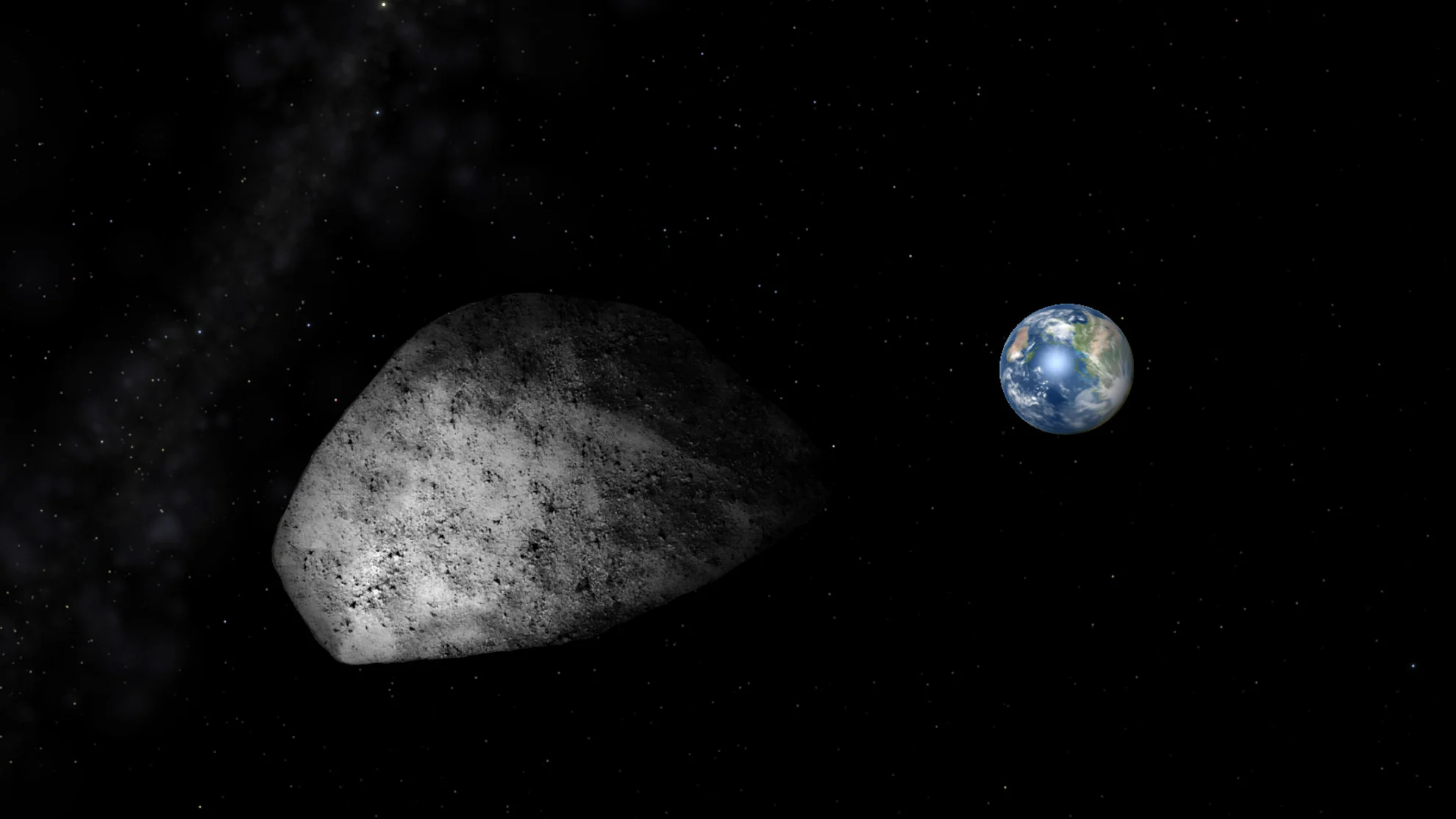
Could a collision cause asteroid Apophis to hit Earth? New study says no
Apophis will safely pass Earth at a very close distance in 2029, but what if some other space rock smacked into it before then, pushing it onto a path that was far more dangerous? New research delves into this scenario to provide us with some reassurance.
Could a collision with another object in space set massive asteroid Apophis on a collision course with our planet? This question has been on many minds over the past two decades, but new research finds zero chance such a nightmare could come true.
In September 2022, NASA's DART spacecraft flew directly into asteroid moon Dimorphos at top speed. While neither this small asteroid nor its parent Didymos were ever a threat to us, the mission still demonstrated our capability to divert a dangerous asteroid away from an impact with Earth.
However, the same principle NASA used for DART — slamming an object into an asteroid to change its course — technically works both ways. There are over a million asteroids zipping around in the inner solar system. What are the chances that two of these space rocks could collide, putting one on a direct path to strike our planet?
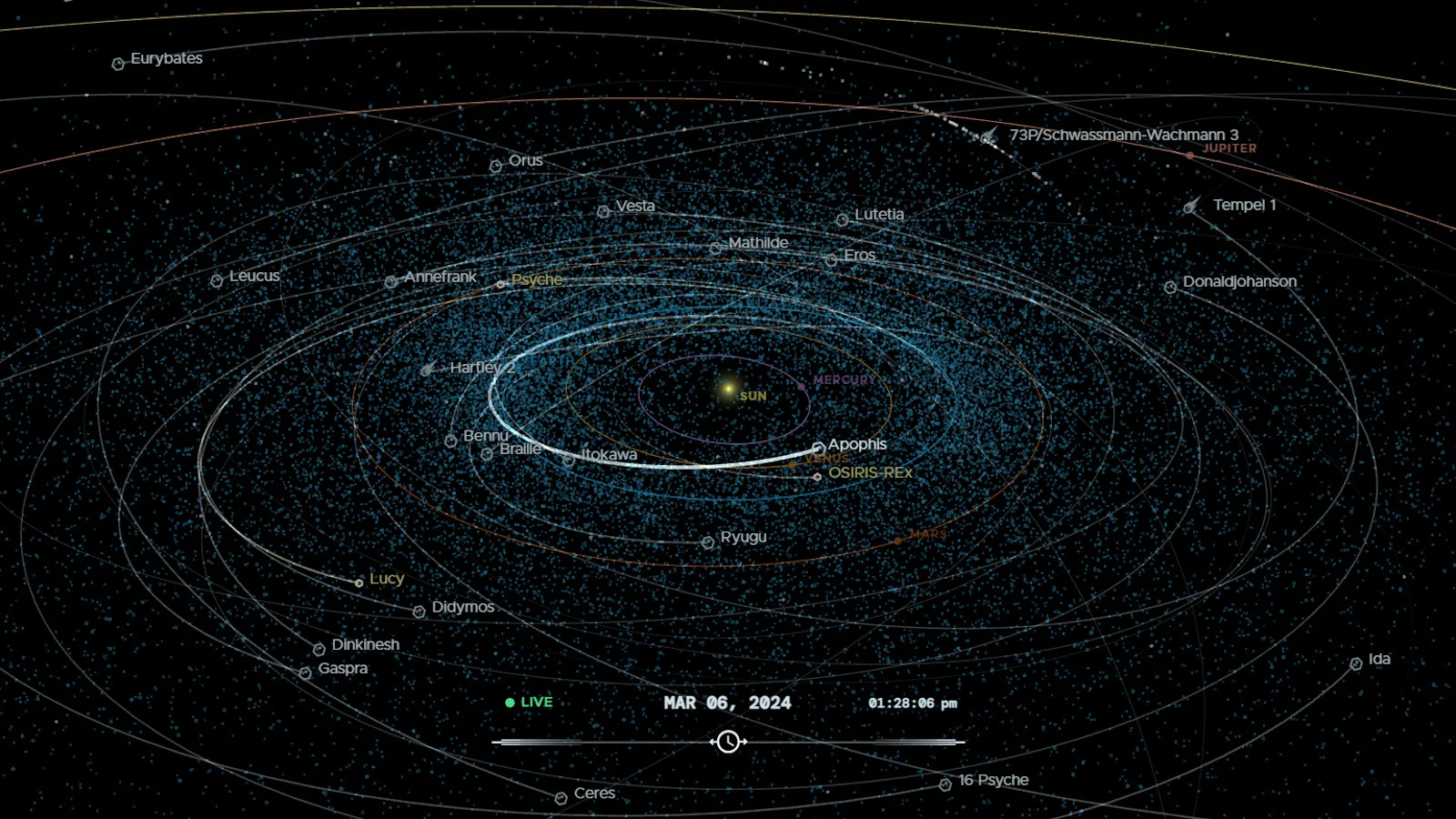
NASA's Eyes on Asteroids shows the location of all known asteroids (blue dots) as they orbit around the Sun. Hexagons denote large named asteroids, with circles representing spacecraft. Credit: NASA
That is the question Paul Wiegert from Western University and Benjamin Hyatt from the University of Waterloo asked in a new study soon to be published in the Planetary Science Journal.
The focus of their study was a 330-metre-wide asteroid named 99942 Apophis.
Since its discovery, Apophis has given the scientific community a few scares. It poses so little risk now that NASA removed it from their Sentry list of potentially hazardous asteroids in February 2021. However, it was considered one of the most dangerous of all the known asteroids at one time.
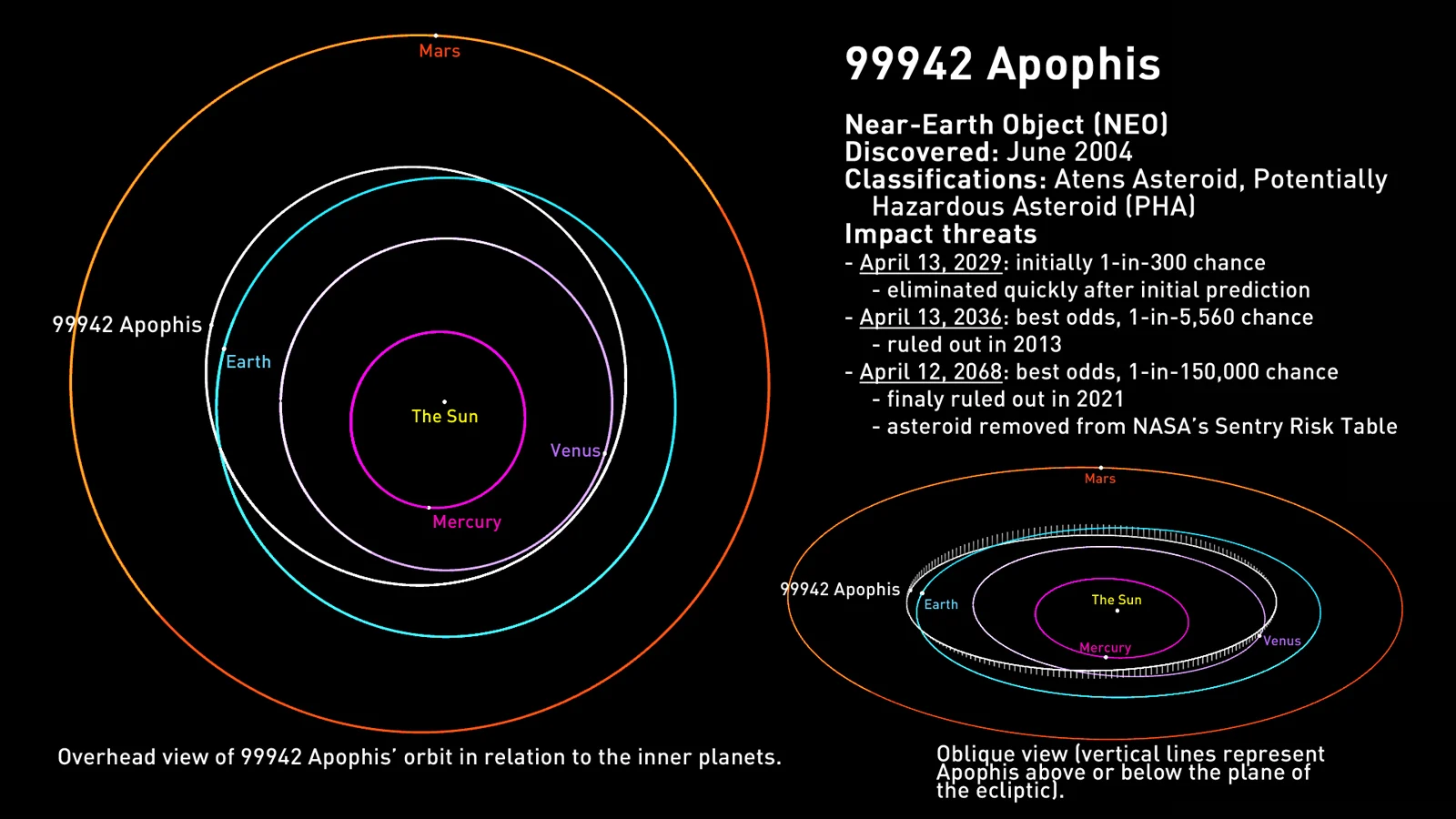
This diagram plots Apophis' orbit from two viewpoints and highlights the details of the asteroid and its most high-risk potential impacts. Credit: NASA/JPL-Caltech/Scott Sutherland
"Asteroid Apophis has fascinated us as a species since its discovery in 2004: it was the first credible threat from an asteroid to our planet," Wiegert, a member of Western University's Institute for Earth and Space Exploration, said according to Western News. "Even now that we know it's on course to miss us by a safe margin, astronomers remain vigilant. It's the asteroid we just can't stop watching."
DON'T MISS: Everything you need to know for April's spectacular and rare solar eclipse
The specific focus on Apophis was due to an encounter between Earth and this massive asteroid coming up on April 13, 2029.
On that date, at around 5:46 p.m. EDT, Apophis will fly past at a distance of just 31,600 kilometres. That is closer than the ring of geostationary weather and communication satellites orbiting our planet.
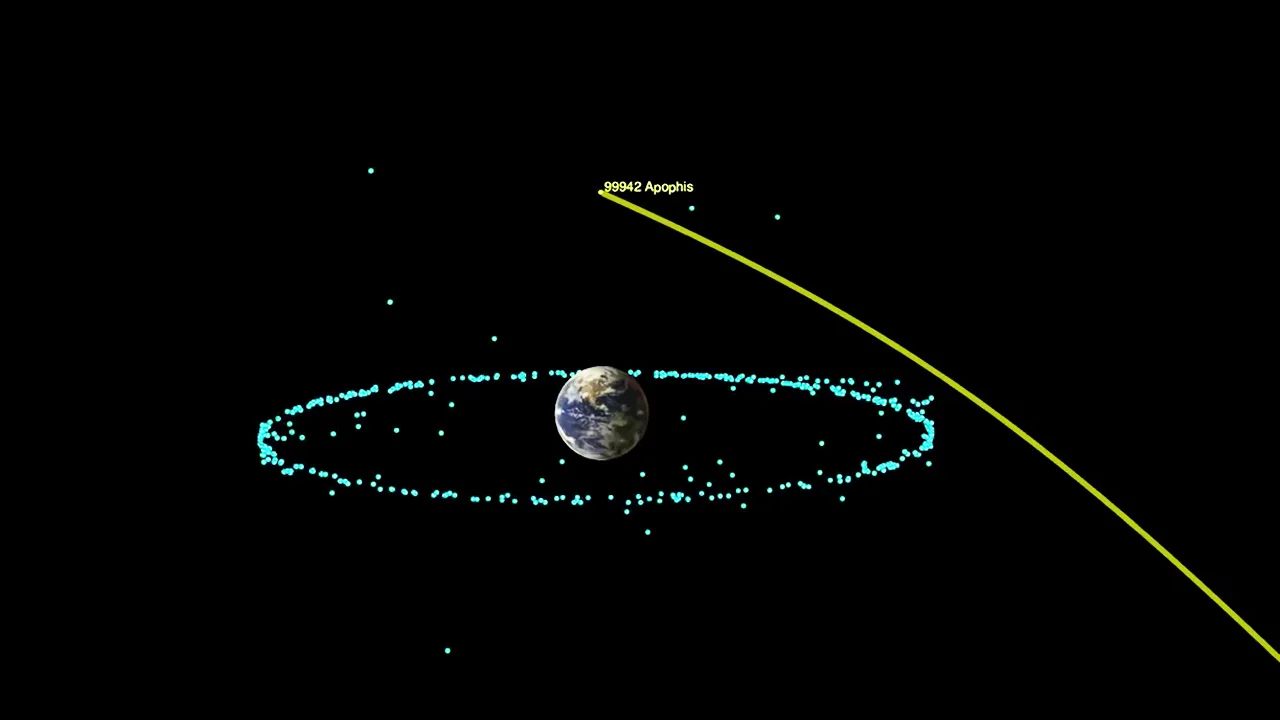
Apophis' closest approach on April 13, 2029 is shown in this NASA simulation. The ring of objects surrounding Earth represents the collection of geostationary weather and communication satellites orbiting the planet, roughly 36,000 km out. Credit: NASA/JPL-Caltech
It will be the closest pass for Apophis — past or future — and the closest flyby of an asteroid of Apophis' size we've ever seen. So, compared to most other asteroids, it may only take a slight nudge in the wrong direction to push Apophis onto a much more dangerous trajectory for that 2029 encounter.
"Given how closely Apophis will pass Earth, there is a possible risk that a deflection from its current trajectory may move Apophis closer to impacting us," Hyatt, a University of Waterloo undergraduate student, told Western News. "Hypothetically, another asteroid colliding with Apophis could cause such a deflection, motivating us to study this scenario however unlikely it may be."
SPRING 2024: Get an in-depth look at the Spring Forecast, tips to plan for it, and much more!
Although there are roughly 1.3 million asteroids flying around in the inner solar system, space is so immense that these objects only rarely encounter each other or us. Still, as Wiegert and Hyatt point out in their study, groups of asteroids that share similar orbits (known as 'families') are thought to originate from larger objects that broke apart due to collisions. Also, astronomers have documented at least five impacts between asteroids in the past two decades.
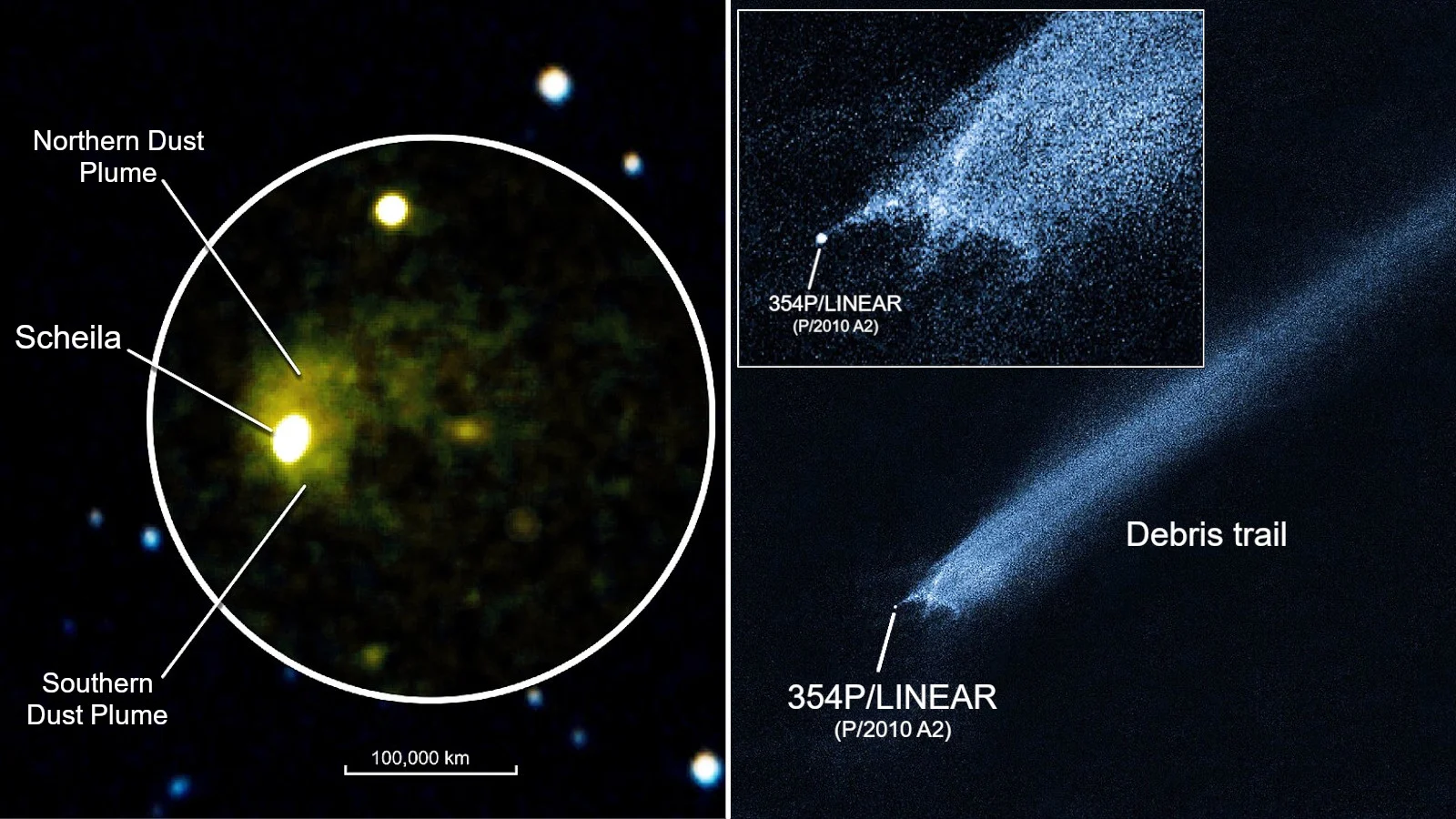
Two examples of asteroid collisions are shown here - 596 Scheila, on the left, with the two dust plumes that were triggered by an impact with a smaller asteroid in late November or early December 2010, and 354P/LINEAR, with the bizarre X-shaped dust plume streaming behind it, as seen by the Hubble Space Telescope in January 2010. Credits: NASA/Swift/DSS/D. Bodewits (University of Maryland, College Park) and NASA, ESA and D. Jewitt (UCLA)
So, Wiegert and Hyatt looked for any potential impacts that could change Apophis' orbit.
"We calculated the paths of all known asteroids using a detailed computer simulation of our Solar System and the possibility of such an unlikely event was evaluated," Wiegert explained. "Fortunately, no such collisions are anticipated."
Out of all the known asteroids, Wiegert and Hyatt found only four that stood out as having reasonably close encounters with Apophis leading up to the 2029 flyby.
Three of those four pass Apophis at distances measured in the tens of millions of kilometres. Although more observations would better lock down our estimates of their orbits, even with the uncertainties, these encounters are far too distant to be of any concern.
The fourth is 4544 Xanthus, an asteroid nearly four times larger than Apophis that was discovered in 1989. After 35 years of observations, the orbit of Xanthus is very well known. While it doesn't come close enough to Earth for NASA to consider it potentially hazardous, according to Wiegert and Hyatt, it will pass by Apophis on December 25, 2026, at a distance of around half a million kilometres.
While that is a reasonably close shave by astronomical standards, it still represents a clean miss.
*Watch below: No threat of known asteroid striking Apophis and diverting it for an Earth impact*
In their study, Wiegert and Hyatt noted that some asteroids couldn't be reliably plotted, as we require more observations to better lock down their orbits. Also, while no direct impacts were found, fragments or material travelling along with some of these objects — especially 4544 Xanthus — could still collide with Apophis, resulting in some small amount of deflection of its orbit. They called for further study of these objects to determine whether any such debris exists along their orbits.
Another essential thing to note is that even if some known or unknown asteroid did collide with Apophis in the next few years, it wouldn't necessarily spell disaster for us. The exact timing and angle of the impact would determine the final path of Apophis, with only a tiny fraction of the possible outcomes resulting in an impact on Earth.
"Should a collision occur, that would not necessarily deflect Apophis towards us," Wiegert said in an email to the Weather Network. "It could just as easily be away from us."
Thumbnail image is a combination of an artist's rendering of asteroid Apophis by The Planetary Society (CC BY-NC 3.0 DEED) with a view of Earth from Apophis' closest 2029 approach distance generated by the astronomical software Celestia.
